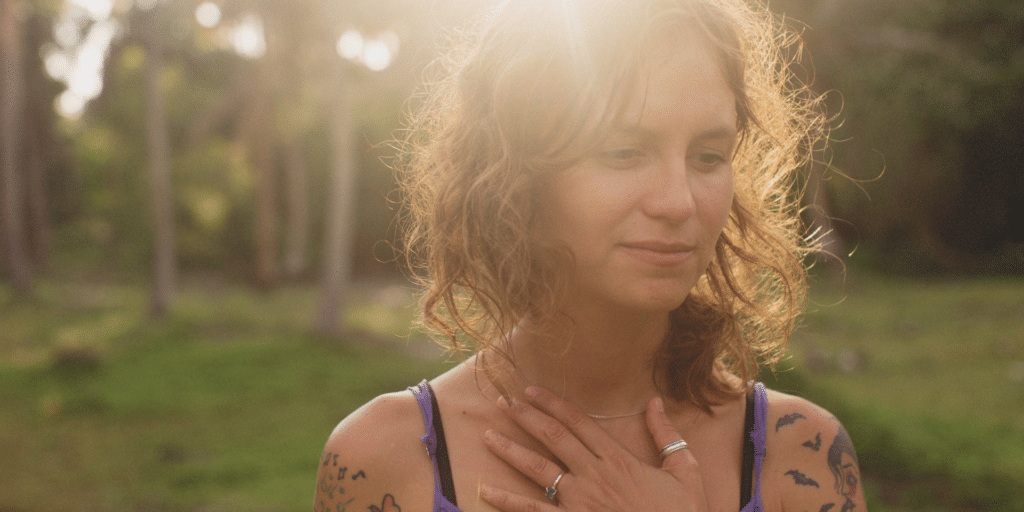“Self-care” has become a buzzword, often associated with face masks, glasses of wine, and weekend getaways. These things can be wonderful, but they are often reactive—a temporary fix for when you’re already feeling overwhelmed.
But what if there were a deeper, more foundational practice to build lasting resilience from within?
This is the practice of self-nurturance.
Here at My Denver Therapy, we guide clients in understanding that while self-care is about the things you do, self-nurturance is about the relationship you have with yourself. It’s the proactive, consistent, and compassionate attention you provide to your own emotional, physical, and spiritual needs. It’s not a quick fix; it’s a sustainable way of living that can carry you through life’s inevitable challenges.
This guide will walk you through what self-nurturance truly is, why it can be so difficult, and share five tangible, therapist-approved ways to begin nourishing yourself today.
Why Is Self-Nurturance So Hard (and So Crucial)?
If you find self-nurturance difficult, you are not alone. Many of us weren’t taught how to do it. For those who didn’t receive consistent, affectionate care in childhood, the act of turning that care inward can feel foreign or even selfish.
Furthermore, we live in a culture that often glorifies burnout.
- A Culture of Burnout: A 2023 report by Gallup found that 44% of U.S. employees feel “a lot” of stress daily. This chronic stress depletes our inner resources, making nurturance feel like a luxury rather than a necessity.
- The Inner Critic: Many people have a harsh inner voice that tells them they are “unproductive” or “lazy” for resting. Nurturance requires gently challenging this voice.
- Systemic Barriers: It’s crucial to acknowledge that the ability to rest and nurture oneself is a privilege. Systemic factors and inequities create significant stress and limit access to resources. For example, the American Psychological Association (APA) reports that racial and ethnic minority groups often face more significant barriers to mental health care, making the work of self-nurturance both more difficult and more essential.
Nurturing yourself is a radical act of self-respect in a world that constantly demands more. It is the foundation upon which true mental and emotional health are built.

5 Actionable Ways to Practice Self-Nurturance
Self-nurturance isn’t about grand gestures. It’s built through small, consistent, and loving actions. The goal is to choose activities that leave you feeling genuinely rested and refreshed. Here are five areas to focus on.
1. Create a Physical and Psychological Sanctuary
Your environment profoundly impacts your nervous system. Designating a space in your home that is dedicated solely to your peace is a powerful act of self-nurturance.
This isn’t about interior design; it’s about sensory kindness.
- What it is: A corner of a room, a comfortable chair, or a spot by a window.
- How to do it: Fill it with things that soothe your senses. This could be a weighted blanket, a soft pillow, a candle with a calming scent like lavender, or a playlist of gentle music. This space is a non-negotiable zone—no work emails, no stressful conversations. It’s where you go to simply be.
- The Science Behind It: Creating a safe and predictable environment helps regulate the nervous system, signaling that you are safe from threats and can move out of a “fight-or-flight” state into a more restful one.
2. Nourish Your Body with Intention and Kindness
Food is the most fundamental form of nourishment. Self-nurturance reframes eating from a task or a source of anxiety into an act of profound self-love.
- What it is: Consciously choosing and preparing a meal that feels satisfying and energizing to you.
- How to do it: Focus on what your body is asking for. Instead of judging your choices, practice speaking to yourself with the same kindness you would offer a loved one. Pay attention to the colors, textures, and flavors. Think about how the food is fueling your body and mind. Philosophies like Intuitive Eating and Health at Every Size (HAES) are excellent resources for healing your relationship with food and your body.
- The Science Behind It: Mindful eating has been shown to reduce stress and increase appreciation for your food, which can improve digestion and overall well-being. It’s about listening to your body’s innate wisdom.
3. Soothe Your Nervous System with Temperature
Your skin is your largest organ, and it’s a direct pathway to your nervous system. Using temperature changes through water can be one of the quickest ways to shift your emotional state.
- What it is: A warm bath or a cool shower used intentionally to calm stress.
- How to do it: For relaxation, try a warm bath with Epsom salts and a few drops of eucalyptus or lavender essential oil. To quickly ground yourself when feeling anxious or overwhelmed, try ending your shower with 30 seconds of cool water.
- The Science Behind It: This practice directly engages the vagus nerve, a core component of our parasympathetic nervous system (the “rest and digest” system). Stimulating the vagus nerve with temperature changes helps increase vagal tone, which improves your body’s ability to regulate heart rate, manage anxiety, and bounce back from stress.
4. Find Awe and Perspective in Nature
Nature is one of our most powerful co-regulators. Stepping outside can provide perspective, calm the mind, and inspire a sense of wonder.
- What it is: Spending intentional time outdoors, whether it’s a walk in a Denver city park like Wash Park or a drive to the foothills.
- How to do it: Leave your phone behind. Pay attention to your five senses. What do you see (the vastness of the sky, the complexity of a leaf)? What do you hear (birds, the wind)? What do you feel (the sun on your skin)?
- The Science Behind It: Research published in journals like Frontiers in Psychology shows that spending even 20 minutes in nature can significantly reduce levels of the stress hormone cortisol. Researcher Brené Brown connects the feeling of awe—often experienced in nature—directly to joy, one of our most vulnerable and essential emotions.
5. Reconnect with Gentle, Non-Judgmental Creativity
Creativity is a natural human impulse that we often lose touch with in adulthood. Self-nurturing creativity is not about producing a masterpiece; it’s about the soothing process of creation itself.
- What it is: Engaging in a simple, hands-on creative activity with no expectation of the outcome.
- How to do it: Try an adult coloring book, sketch freely with colored pencils, try a simple watercolor tutorial online, or even just journal your thoughts without censoring them. The key is to let go of perfectionism. Allow yourself to “color outside the lines” and see it as an act of freedom, not failure.
- The Science Behind It: Engaging in creative acts can induce a flow state, similar to meditation. This state has been shown to reduce anxiety and depression and promote an overall sense of well-being.
How Therapy Can Help You Build Self-Nurturance
Learning to nurture yourself is a skill. If it feels difficult, remember that you don’t have to learn it alone. A therapist can provide the safe, supportive relationship where this practice can take root.
In therapy, we can help you:
- Identify the Barriers: Explore the past experiences and core beliefs that make self-nurturance feel undeserved or out of reach.
- Heal the Inner Critic: Develop tools from approaches like Cognitive Behavioral Therapy (CBT) to challenge and soften that harsh internal voice.
- Process Difficult Emotions: Learn to sit with and validate your feelings in a safe space, so you no longer need to numb or avoid them.
- Build a Personalized Plan: Co-create a nurturing routine that feels authentic and sustainable for your unique life and needs.
Being seen, heard, and cared for are fundamental human needs. Learning to provide that for yourself is a transformative journey.
If you are ready to move beyond survival mode and build a more nourishing relationship with yourself, we are here to help. Contact My Denver Therapy today to connect with a therapist who can support you on your path.







